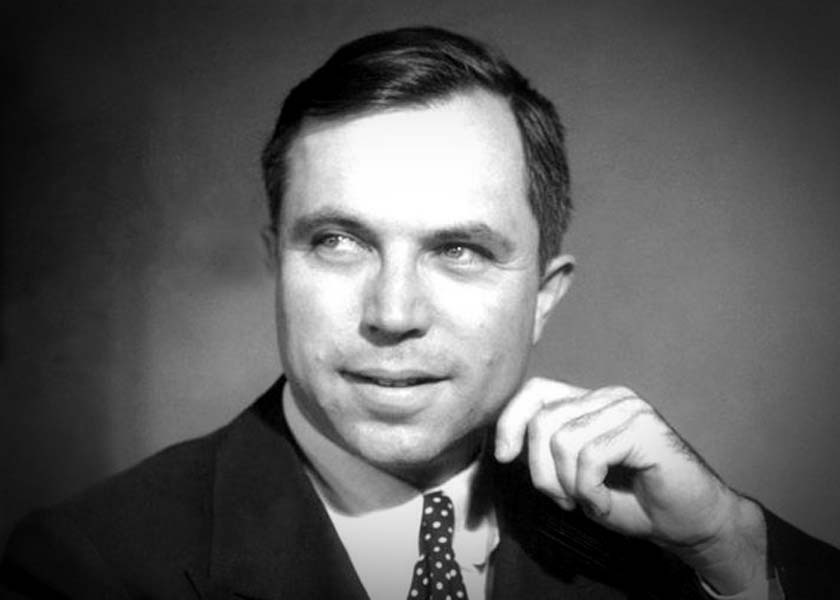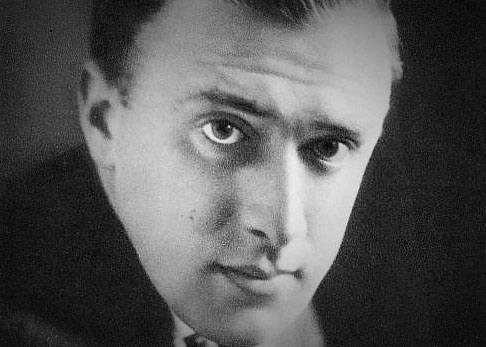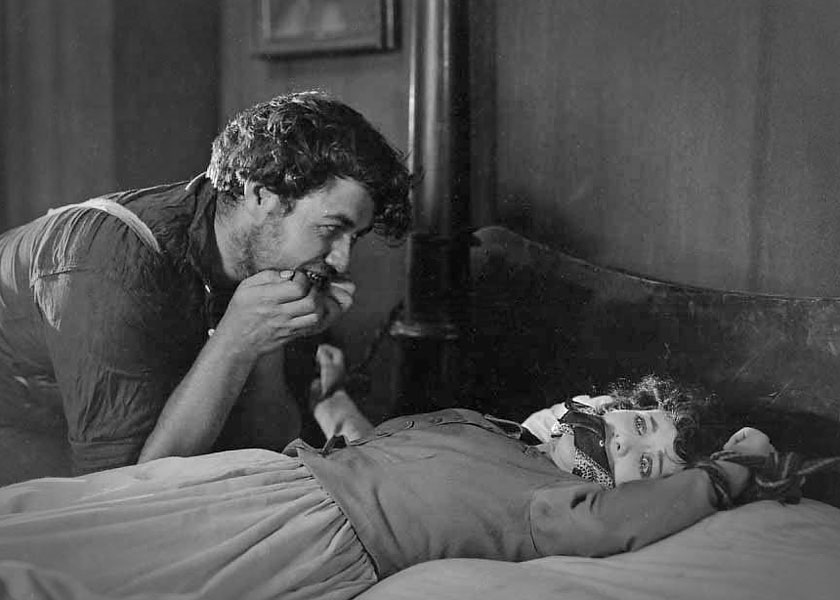Synopsis
Wild Oranges opens on a piece of paper being blown along a road. A happy couple are riding in a buggy pulled by two horses. The paper is blown in front of the horses, causing them to bolt. The driver struggles to stop the runaways. The woman clings to him. As they gallop around a turn, she is thrown out. The driver finally stops the team and runs back to her. She is dead. John Woolfolk (Mayo) is distraught.
Three years later, Woolfolk, who has withdrawn from society, is sailing aimlessly. His only companion is cook and sailor Paul Halvard (Sterling). Sailing along the Georgia coast, they cross a small bar into an inlet. The area is wild, filled with dense trees and shrubs. The only visible dwelling is a large, dilapidated house. Litchfield Stope (de Brulier) and his granddaughter Millie (Valli) peer fearfully from the shrubbery.
The next morning, Woolfolk paddles his rowboat to shore. In the unkept garden of the house, he samples some wild-growing oranges. The first bite is so bitter, he spits it out, but an interesting taste lingers. A second bite reveals the fruit to be zestful with an uncommon pungent taste. Millie approaches and greets him fearfully, but hopefully. He says he took some of her wild oranges and has come to ask for water. She replies that he is welcome to both. As they talk, a large, unkempt man, Iscah Nicholas (Post), who has forced himself upon the Stopes, watches them angrily.
After Woolfolk leaves, Nicholas confronts Millie and asks for a kiss. She refuses, and he carries her into the swamp and places her on a tree stump. Surrounded by alligators, she finally agrees and gives him a peck on the cheek.
Halvard comes ashore for the water. Nicholas accuses him of stealing it and breaks the cask. A large dog, chained to his doghouse, barks fiercely. Woolfolk, angered, comes ashore and confronts Nicholas. They have a brief fight. Nicholas tells him to stay away, and Woolfolk, fearful of getting involved with the young woman, backs off.
Woolfolk starts to leave, changes his mind, and returns. MIllie leans against him and touches him searchingly. She never has been away from the area around the house. Conflicted, he does not respond and leaves her. The next morning the boat is still in the inslet, and Millie comes aboard. They sail out to sea, Millie is thrilled and frightened by the water’s powerful movement. She tells Woolfolk about the fear that has descended in her family from her grandfather to her father to her. She does not want to die in the swamp, she wants freedom. Woolfolk tries to comfort her, but hesitant to lose another love, he does not touch her. She says he is free. He tells her about his wife and his fear of losing love again. Their fear prevent their coming together.
Millie returns to the house, and Nicholas asks her to marry him. She refuses. He warns her that bad things will happen if she provokes him. Woolfolk goes back to his boat. At dawn he starts to sail away, but, longing for Millie, he returns. He tells Millie that he loves her. She loves him too, but Nicholas has threatened her and her grandfather if she attempts to leave. Woolfolk will wait for them by the shore at eight that night, and they can sail away.
That night, Nicholas catches Millie and Stope sneaking away. He strikes Stope a fatal blow and carries Millie to her room. Woolfolk becomes concerned and looks for them. He finds the grandfather’s body and climbs the stairs to Millie’s room. Nicholas has tied Millie in her bed and is about to attack her. In the hall, Woolfolk stumbles and loses his gun. Nicholas has heard him and rushes out. They fight fiercely, upsetting the lamp and causing fire to spread through the house. Millie finally frees herself. Woolfolk hits Nicholas with a chair leg and knocks him out; he and Millie escape to the boat. Nicholas finds Woolfolk’s gun and shoots at them from the shore. Halvard is wounded, but they manage to raise the sails and cross the bar to safety. The dog has broken its chain and attacks Nicholas who falls into the water and drowns. Afterward, the dog sits before the burning house, presumably looking for Stope, his master.
At sea, Millie opens herself to freedom from fear. Woolfolk, embracing her, places his furture in her hands.
Discussion
In the romantic melodrama Wild Oranges, two people, psychologically and physically detached from the fullness of life, meet, fall in love, and, repudiating fear and isolation, open themselves to each other and to happiness and contentment in the wider world. Woolfolk, buried in grief, sailing aimlessly, meets a secluded, wistful young woman who arouses his buried emotions. Millie, isolated in the swamp, is constrained by her fears and loneliness until Woolfork’s presence evokes previously unknown emotional responses. She is compared to the orange trees: raised wild without tending, but with an uncommon, provocative presence that stimulates responses in Woolfolk that he had not known in years. Unbalanced and menacing, Nicholas, the physical barrier to Millie’s freedom, provides the source of action and excitement in the plot. The dog, meanwhile, is a convenient means of punishing the murderous Nicholas. The fate of the abandoned dog is unknown; he is last shown looking for his master to come out of the burning house.
Although Woolfolk and the sailor and cook Paul have spent many months together on a small boat, the social convensions of the time would not have permitted any hint of the homoerotic possibilities of the situation, if, of course, the filmmakers themselves had considered that aspect of the relationship.
King Vidor elicits persuasive emotional acting from his stars, carefully maintaining a sense of restrained longing in both of them. Vidor and cameraman John Boyle produce some striking close-ups of Valli and Mayo, especially during the love scene. Vidor and his production team crossed the country to film in swampy areas along the coast of Florida. The location photography handsomely captures the impenetrable appearance of the forest of wet, vine-covered trees. The unusual setting features locales seldom seen on the screen. Tinting accentuates panoramic scenes of dawn and dusk.
James Kirkwood, an experienced actor who had recently signed with the Goldwyn Company, was the orignal star of the film and shot several scenes portraying Woolfolk. The company had only recently returned to Hollywood from Florida when Kirkwood was seriously injured in a fall from a horse and had to withdraw from the film. He was in the scenes shot on location; those shot at a distance or from the back were saved. New shooting with Mayo was required for close-ups.
Wild Oranges is adapted from a short novel by Joseph Hergershimer (1880-1954), a well-known novelist of the 1910s through the 1940s. Several of his novels, including Tol’able David (1921), Java Head (1923), Bright Shawl (1923) and Cytherea (1924), were adapted to the silent screen. Vidor chose Wild Oranges and wrote the adaptation and continuity.
The reviewers for both The New York Times and Variety praised Vidor
for maintaining intensity despite the small-scale story and limited cast. In
Educational Screen, Marguerit Ornduff called the film a
strange and vivid character study
set in
the sinister beauty of swamps and orange groves.
Tamar Lane in
Motion Picture Magazine praised the
beautiful scenes, splendid acting, smooth running and convincing continuity
resulting from the the perfect direction of King Vidor.

King Vidor was already a well-known director when he signed with Goldwyn Pictures Corporation in 1923. His first film for Goldwyn was Three Wise Fools (1923), a sentimental story of three older men who adopt the daughter of the woman all three had loved and lost in their youth. He selected Wild Oranges as his second film. Vidor was entering a period of exceptional filmmaking, and in 1924 he made two more strong films for Goldwyn: Wine of Youth and His Hour, starring John Gilbert. After the merger in 1924 of Goldwyn Pictures with Metro Pictures Corporation and Louis B. Mayer Pictures, Vidor made his films for the newly formed Metro-Goldwyn-Mayer (MGM) Studios. The Big Parade (1925), a moving depiction of the experiences of a WWI soldier, also starring John Gilbert, was highly successful and became the biggest moneymaker of the decade. In 1926, he directed a Lilian Gish performance of tremulous pathos in La Bohème (again with Gilbert). In 1928, his finest film, The Crowd, a simple story of the happiness, grief, joys and anguish of an urban middle class couple, was released to great acclaim. Also in 1928, he proved his versatility with two highly entertaining comedies starring Marion Davies: The Patsy and Show People. An outstanding director, King Vidor ranks highly among the filmmakers working in Hollywood at the apex of the silent era. Hallelujah (1929), a musical with an African-American cast and a project he had contemplated for some time, was Vidor's first talkie.

Frank Mayo began his film career in 1913 as an uncredited extra in one- and
two-reel short films made by the World Film Company of New Jersey. In 1915, he
moved to California and joined the American Film Company of Santa Barbara. He
continued in shorts and appeared with Ruth Roland in the serial
The Red Circle (1915). In 1919, Mayo joined Universal Pictures and
starred in films — such as Burnt Wings (1920) and
Magnificent Brute (1921), whose plots emphasized the manliness of the
hero. (An ad for Magnificent Brute touted it as
the Virile Story of a Love As Big and As Strong as its own Mighty Pines.
)
The peak of Mayo’s career came in the early 1920s at Goldwyn Pictures, where in
addition to Wild Oranges, he costarred with the studio's leading
actresses, including Eleanor Boardman in
Souls for Sale (1923), Corinne Griffith in
Six Days (1923), and
Colleen Moore in
The Perfect Flapper (1924). At the dawn of the sound era, Mayo was
working for Warner Bros. and appearing in reduced roles down the cast list. He is
billed seventh in Buster Keaton’s Doughboys (1930), his first talking
role. By 1932, Mayo joined other former silent leading man, such as Kenneth Harlan
and Francis X. Bushman Jr., continung their film careers by appearing in small,
uncredited roles. The dozens of films in which Mayo has uncredited bit parts
included A Tale of Two Cities (1935),
Dark Victory (1939), Meet John Doe (1941),
State Fair (1945), and Samson and Delilah (1949).
Virginia Valli began her film career in 1916, at age twenty, with the Essanay Film Manufacturing Company, appearing in short and feature films made at their Chicago studio. Essanay shut down by 1918, and Valli began to freelance. She appeared as a leading lady for many prestigous studios, including Fox, Metro, Universal, and Goldwyn. Never a top star, but always busy, Valli had made over 30 films by 1928 and had co-starred with many important leading men, including Bert Lytel, Lon Chaney, Milton Sills, Thomas Meighan, George O’Brien, and Lloyd Hughes. In addition to Wild Oranges, Valli's other standout films include The Signal Tower (1924), directed by Clarence Brown, costarring Rockcliffe Fellowes and Wallace Beery, and The Pleasure Garden (1925), an early film by director Alfred Hitchcock, made in England for Gainsborough Studios.
Valli’s career declined quickly with the coming of sound. Her final film was Night Life in Reno (1931) for Supreme Feature Films, a minor producing company. In 1931, she married film star Charles Farrell, whose screen career was also beginning a decline, and retired. They moved to Palm Springs and opened The Raquet Club, which for many years was one of the premier sites for lodging and entertainment in the desert.
When he appeared in Wild Oranges, Ford Sterling was several years
past his famed portrayal of the Chief of Police
in the Keystone Comedies of
Mack Sennett. Sterling had run away from home at an early age and joined a circus.
After five or six years as an aerial artist and circus clown, he entered a
vaudeville tour of the Western States. Sterling was in a musical comedy in New
York when Sennett signed him for the American Biograph Company. Sennett, Mable
Normand and Sterling organized Keystone Comedies in 1912. At Keystone, Sterling’s
comedy was active, agitated, and completely inelegant, with lots of eye rolling
and frantic leaping and jumping. He appeared in and was codirector of hundreds of
short comedies. After his separation from Keystone in 1920, Sterling freelanced,
transitioning from comedy into character roles such as the sailor Paul in
Wild Oranges. He made a few feature films after the advent of
talkies, including supporting roles in Sally (1929) and
Her Majesty Love (1931), Warner Bros. vehicles for stage star Marilyn
Miller. He played the White King in Alice in Wonderland (1934),
Paramount Picture’s limp version of the fantasy novel. Sterling finished his
career with a series of comic shorts for RKO Radio Picturers. He died after a
lingering illness in 1939.
Further Reading

